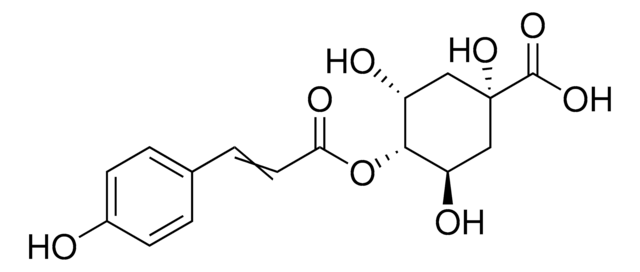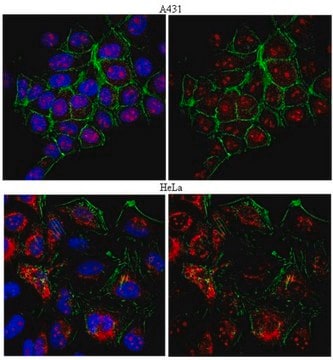SCC179
SMA-560 Mouse Orthotopic Glioma Cell Line
SMA-560 cell line is a well-established glioma model derived from a spontaneous murine astrocytoma.
Synonym(s):
P560, SMA 560, SMA560
About This Item
Recommended Products
technique(s)
cell culture | mammalian: suitable
General description
Source:
SMA-560 cell line was derived from a spontaneous astrocytoma passaged in syngenic VM/Dk mice (2).
Gliomas are a rare and aggressive cancer with an extremely low survival rate and high resistance to treatment (1). Glioma models that recapitulate the multiple features of the disease are important for understanding of mechanisms of glioma malignancy and development of effective therapies, especially those that address tumor-induced immunosuppression and resistance.
References:
1. N Engl J Med 2005; 352(10): 987-996.
2. Acta Neuropathol 1980; 51(1): 53-64.
3. Neurosci Lett 1982; 34(3): 315-320.
4. J Neurol Sci 1983; 62(1-3): 115-139.
5. J Neurol Neurosurg Psychiatry 1986; 49(12): 1361-1366.
6. Neurosurgery 1997; 41(6): 1365-1372.
Cell Line Description
Application
Packaging
Quality
- Each vial contains ≥ 1X10⁶ viable cells.
- Cells are tested negative for infectious diseases by a Mouse Essential CLEAR panel by Charles River Animal Diagnostic Services.
- Cells are verified to be of mouse origin and negative for inter-species contamination from rat, chinese hamster, Golden Syrian hamster, human and non-human primate (NHP) as assessed by a Contamination Clear panel by Charles River Animal Diagnostic Services
- Cells are negative for mycoplasma contamination.
Storage and Stability
Disclaimer
Storage Class Code
12 - Non Combustible Liquids
WGK
WGK 1
Flash Point(F)
Not applicable
Flash Point(C)
Not applicable
Regulatory Listings
Regulatory Listings are mainly provided for chemical products. Only limited information can be provided here for non-chemical products. No entry means none of the components are listed. It is the user’s obligation to ensure the safe and legal use of the product.
ISHL Indicated Name
Substances Subject to be Indicated Names
ISHL Notified Names
Substances Subject to be Notified Names
JAN Code
SCC179:
Certificates of Analysis (COA)
Search for Certificates of Analysis (COA) by entering the products Lot/Batch Number. Lot and Batch Numbers can be found on a product’s label following the words ‘Lot’ or ‘Batch’.
Already Own This Product?
Find documentation for the products that you have recently purchased in the Document Library.
Our team of scientists has experience in all areas of research including Life Science, Material Science, Chemical Synthesis, Chromatography, Analytical and many others.
Contact Technical Service






